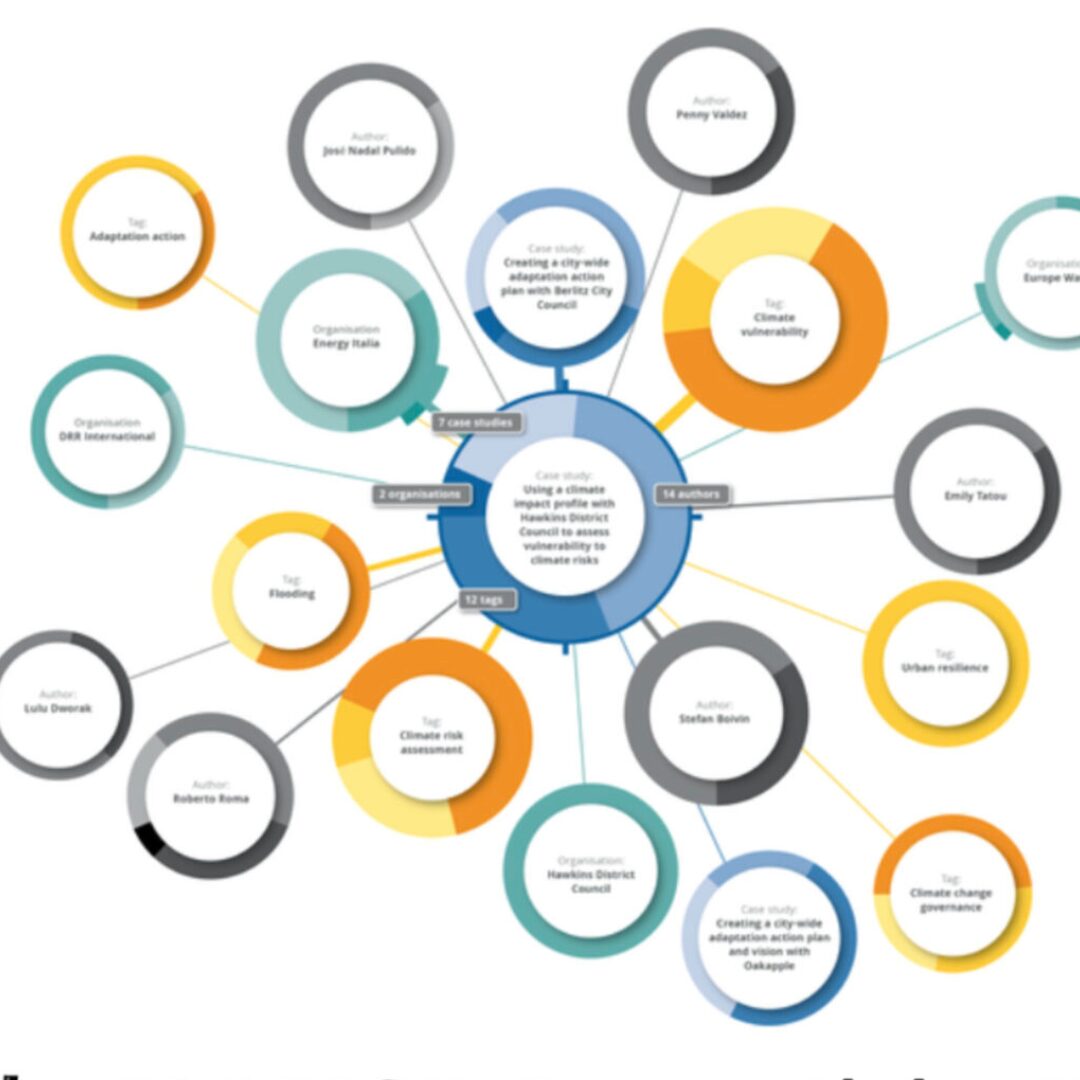The Connectivity Hub: Next Steps

Introduction
Information online is often fragmented, reinforcing a lack of coordination and a tendency for people working in climate change adaptation and related fields, like disaster risk reduction, to work in silos.
Now more than ever before, people across the world are searching for the effects of, and ways to tackle climate change. How can they find the most up-to-date, relevant information that matches their needs?
The PLACARD Connectivity Hub, a unique ‘search and discovery’ tool, seeks to better connect data and resources to address and solve part of this coordination and collaboration puzzle. Leveraging tools, such as taxonomies and knowledge graphs, the hub will create a shared understanding of language and terminology used across different domains and platforms.
Advancing the Connectivity Hub’s Scope
New Horizon Europe projects MAIA and Directed are playing key roles in advancing the scope of the Connectivity Hub:
MAIA is reviewing existing taxonomies and vocabularies focusing on climate change and disaster risk to explore how they can add value to one another and fill knowledge gaps. This will refine and expand the connections in the Hub, helping users to discover more information and organizations relevant to their work. MAIA will also utilise a machine learning approach to analyse selected EU project documents for keywords. This will help maximise the relevance of MAIA taxonomy topic areas and scope; ensure existing climate research is accurately described and connected together; and facilitate the planned input of further climate adaptation and mitigation projects into the Connectivity Hub.
Directed is developing an open-source taxonomy informed by conversations with local stakeholders in a real-world lab setting. Co-exploring local perceptions of risk and governance will provide useful insights into the type of terminology used to describe risk and resilience as well as the perspectives arising across different locations and contexts.
Testing the Connectivity Hub:
MAIA and Directed will also provide opportunities to test the accuracy and usability of the MAIA taxonomy. Once the taxonomy has been further developed and its scope narrowed, we will conduct expert consultations to ensure the terminology and semantic relationships are accurate. Complementing this, in Directed, the real-world labs provide a space for testing the clarity of terms and their definitions with stakeholder groups who possess different knowledge types and insights. Together, this will maximise the widespread applicability of the taxonomy.
Learn more!
Want to know how this new data will be visualised in the Connectivity Hub? Or still unclear about what taxonomies are and why they add value? Check out this short video:
Watch this short video to learn more about how the Connectivity Hub tool can be used in practice and important next steps to advance its scope and reach.
If you are a knowledge manager, please contact [email protected] or [email protected] for more information on the ways you can share your platform content dynamically.
(0) Comments
There is no content